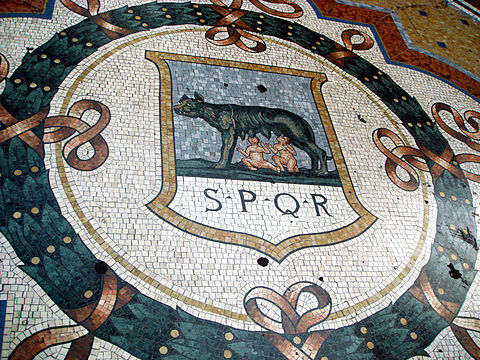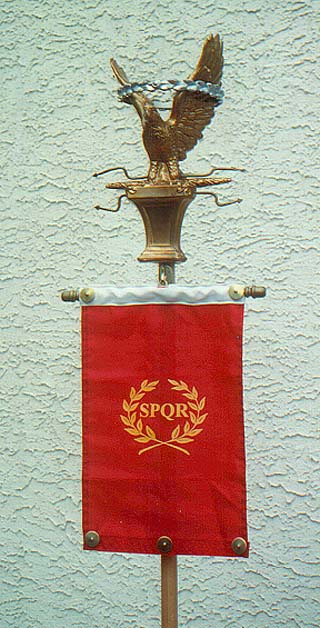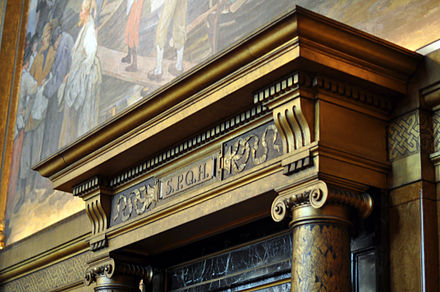By Edward Whelan, Contributing Writer, Classical Wisdom
We have all come across the abbreviation or emblem SPQR, in books, museums, and monuments. Did you ever wonder what it meant? SPQR is an abbreviation for Senātus Populusque Rōmānus. These words became a symbol of Rome and the Roman people. While they are well-known even today, very few people actually know what they stand for… or what was their significance. What exactly is the meaning, history and the importance of the abbreviation Senātus Populusque Rōmānus?

Detail from the mosaic floor in the Galleria Vittorio Emanuele II in Milan
SPQR: What does it stand for?
In Latin, Senātus means “Senate”, Populusque refers to the people of Rome and Rōmānus is “Roman”. SPQR, therefore, is an abbreviation for the Roman Senate and People. This was an important legal and political phrase, illustrating legal thinking on sovereignty and the origin of political power and legitimacy.
The phrase suggests that all power comes from the people of Rome. This reflects the democratic nature of the Roman Republic and its rejection of monarchy and is very similar to the modern conception of popular sovereignty in present-day democracies. However, the people who were the source of sovereignty in Rome was much narrower and only represented free, affluent, males.

Arch of Septimius Severus top inscription
Senātus, the main political and deliberative assembly in Rome, actually means ‘assembly of old men’. The Senate was initially a council of elders who had to guide the people of Rome during war and peace. The S in SPQR is an indication of the prominent role of the Senators in the Republic and later Empire.
Senātus and the Populus Rōmānus, are sovereign when combined and both are the pillars of the Roman state. This indicated that the Roman Senate and the people had to work together for the welfare of the Republic and later the state.
SPQR became an emblem of Rome because it encapsulated the Roman political system. The abbreviation became a source of pride for many citizens of the Republic and later the Empire. This is because they believed that their system was the source of their freedom and greatness.
SPQR – As an emblem
The initials were also an important emblem in the Roman army. The legions Aquila (eagle) was their military standard and they were extremely important to legionnaires. They would fight to the death to ensure that they did not fall into the hands of the enemy. Indeed, the capture of an eagle was considered to be a national disgrace and shame.
Every Aquila had a cloth with the words SPQR and many also had the initials stamped on them. This was to indicate that the legion was loyal to the Senate and the People of Rome. It was to remind the legions for whom they were fighting.

A modern recreation of a Roman standard.
Republican and Imperial coins often carried the abbreviation for centuries. High-value coins typically had SPQR stamped on them, in part to show that they were legal tender. Many buildings that were built around the Empire were dedicated to the Roman People and Senate by using the abbreviation SPQR.
The letters were often used to portray the power and the glory of the Empire or the Republic and were extremely important as a symbol in pre-literate societies. SPQR was so ubiquitous in the Roman provinces because it was a way of reminding the local populace of who was in charge.

SPQH – Hamburg Rathaus
The History of SPQR
The emblem is not as old as it is commonly assumed. The abbreviation only became widely used in the 80s BC. Before this, the emblem of the Roman Republic was simply Roma.
The abbreviation was adopted at this time because of the political environment; the Roman Republic was riven by political violence between popular and aristocratic factions. Moreover, the provincials had revolted during the Social War, in pursuance of their demands for citizenship in the Social War. The abbreviation was possibly used in the 80s BC as a call for unity among all the factions that were tearing the Republic apart.

“Superiority of the warrior class. State 2.” Etching by Wenceslaus Hollar, (University of Toronto)
After the Fall of the Roman Republic, Octavian, later Augustus, kept the emblem. This was to demonstrate continuity with the past, even though Augustus was creating an Imperial system. Successive Emperors continued to use the emblem on documents and buildings for the same reason.
The emblem continued in use until the 4th century AD. It was gradually phased out over a period of time beginning from the reign of Constantine the Great. This was a deliberate policy on the part of Christian Emperors and part of their attempts to Christianize the Empire, as SPQR was associated with the paganism of the Roman past.
However, SPQR was revived in the Middle Ages as a symbol of liberty and democracy and indeed it can still be seen today in many public buildings.









One comment
Okay, but why the Q?
Our apologies, you must be logged in to post a comment.